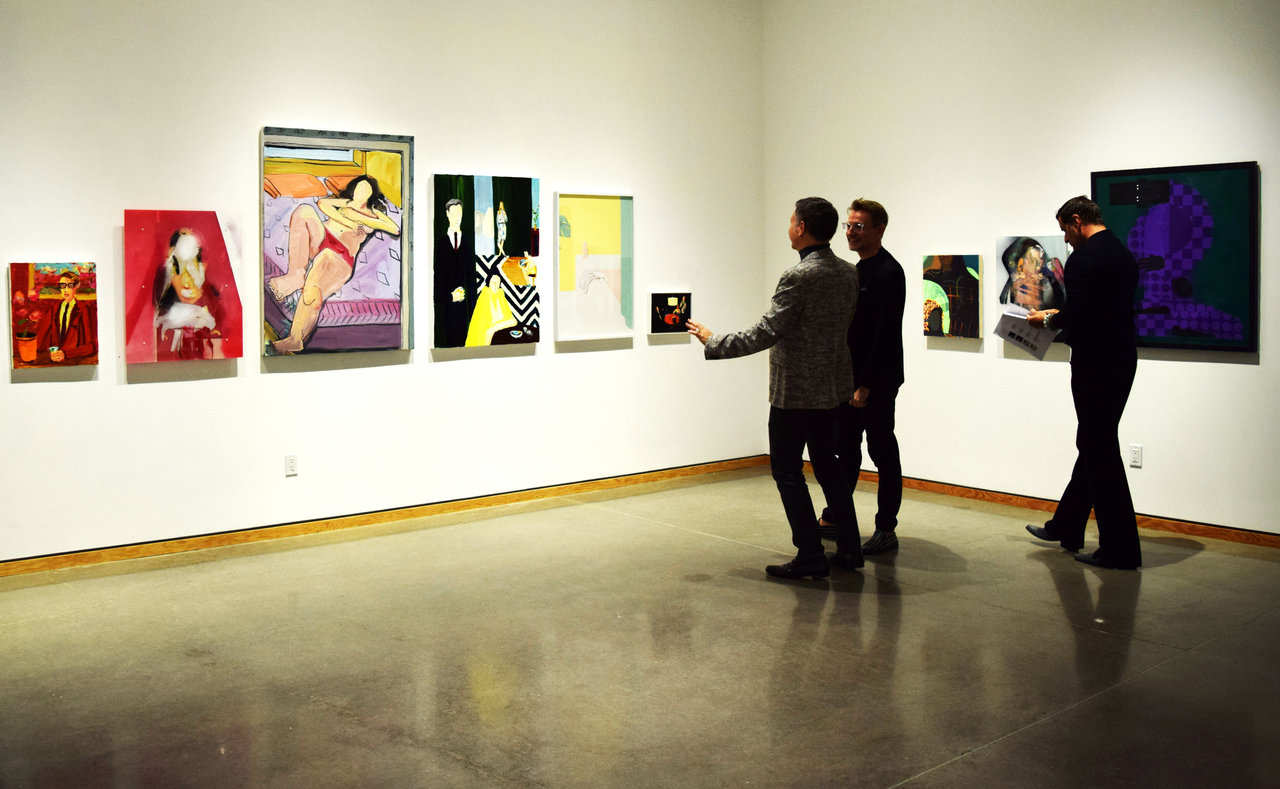 Installation view of the The Anxious Body at Angell Gallery, 2017. Photo Simon Termine
Installation view of the The Anxious Body at Angell Gallery, 2017. Photo Simon Termine
In our increasingly social world flourished through technology, The Anxious Body is an intricate group exhibition striving to the influence of social media and current socio-political paradigms on contemporary visual art. The Angell Gallery draws from the talents of nine contemporary artists from Toronto and New York, all of whom use figurative styles in examining elements of humanity and society as it is shaped in our given context. In contrast to the instantaneity and accessibility of digital images, paintings and drawings allow for slowed, contemplative moments that compel its viewers to consider laden aspects of their lives. Artistic traditions, especially with regard to genre painting and representations of the body, physically portray societal conditions, and this particularly relevant in a time when our bodies – with regard to race, gender, and self-identity – are socially emphasized.
 Artists (from left to right): Kathy Osborn, Johnathan Key, Stella Cade, Bill Clarke (curator), John Holland and Natalka Husar. Photo: Simon Termine
Artists (from left to right): Kathy Osborn, Johnathan Key, Stella Cade, Bill Clarke (curator), John Holland and Natalka Husar. Photo: Simon Termine
Every artist in this exhibition explores the anxieties associated with our outward identities. Kathy Osborn’s works depict haunting moments of daily life that are deceptively candid and mundane. Despite their modest luxuries, there is an intrapersonal tension and social awkwardness that are instinctively unnatural. During the exhibition’s introductory artist talk, Langdon Graves explained that her drawings and installations are inspired by ghost stories told by her grandmother and other women in her family. Fearful of the loss of these narratives, the drawings are meant to visually record these stories of ethereal experiences in the lives of the women in her family, thus striving to unite the women of her family through these shared narratives.
 Kathy Osborn, Lamp, 2017, oil on paper on board, 14 x 10 inches. Courtesy of Angell Gallery
Kathy Osborn, Lamp, 2017, oil on paper on board, 14 x 10 inches. Courtesy of Angell Gallery
Stella Cade shifts this focus from familial to personal identity. Her works consist of feminine bodies positioned in self-centering, often evocative positions. They contain elements of self-portraiture that are meant to juxtapose the contemporary phenomenon of “selfies,” which are generally intended for public vanity. However, rather than capture these moments for the purpose of open consumption, they are intended as moments of solitary healing from the constant traumas of society, emphasizing the experience as opposed to the identity.
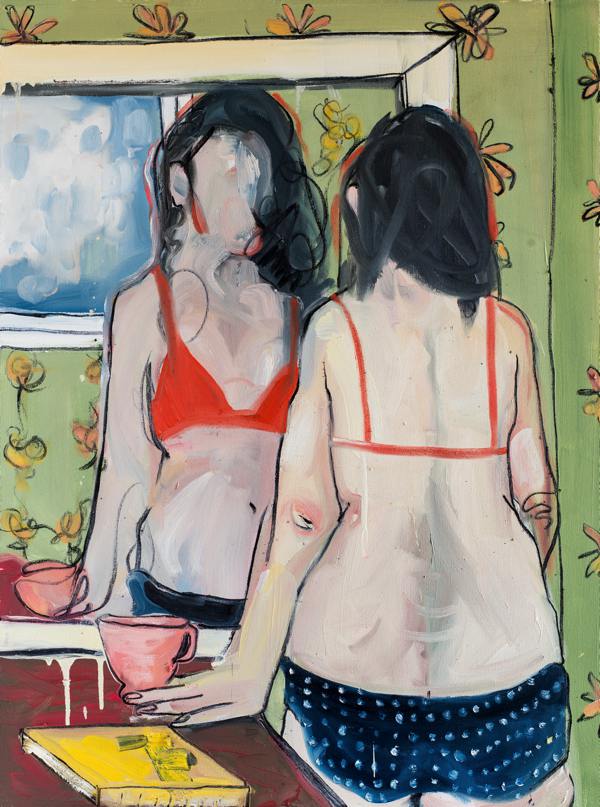 Stella Cade, As a Reminder: People Have Rich and Full Lives that they are Living Outside of Your Immediate Reality, 2017, oil on canvas, 40 x 30 inches. Courtesy of Angell Gallery
Stella Cade, As a Reminder: People Have Rich and Full Lives that they are Living Outside of Your Immediate Reality, 2017, oil on canvas, 40 x 30 inches. Courtesy of Angell Gallery
Following the selfie motif, John Holland goes on to address the medium directly and how it shapes notions of curated identity. Painted on translucent Plexiglas with image after image layered over one another, this method alludes to use of digital filters that give further possibilities to the user in shaping their appearance. Yet the more that these figures edit their portraits, the more their identity is stripped away and reduced to a carefully-shaped façade.
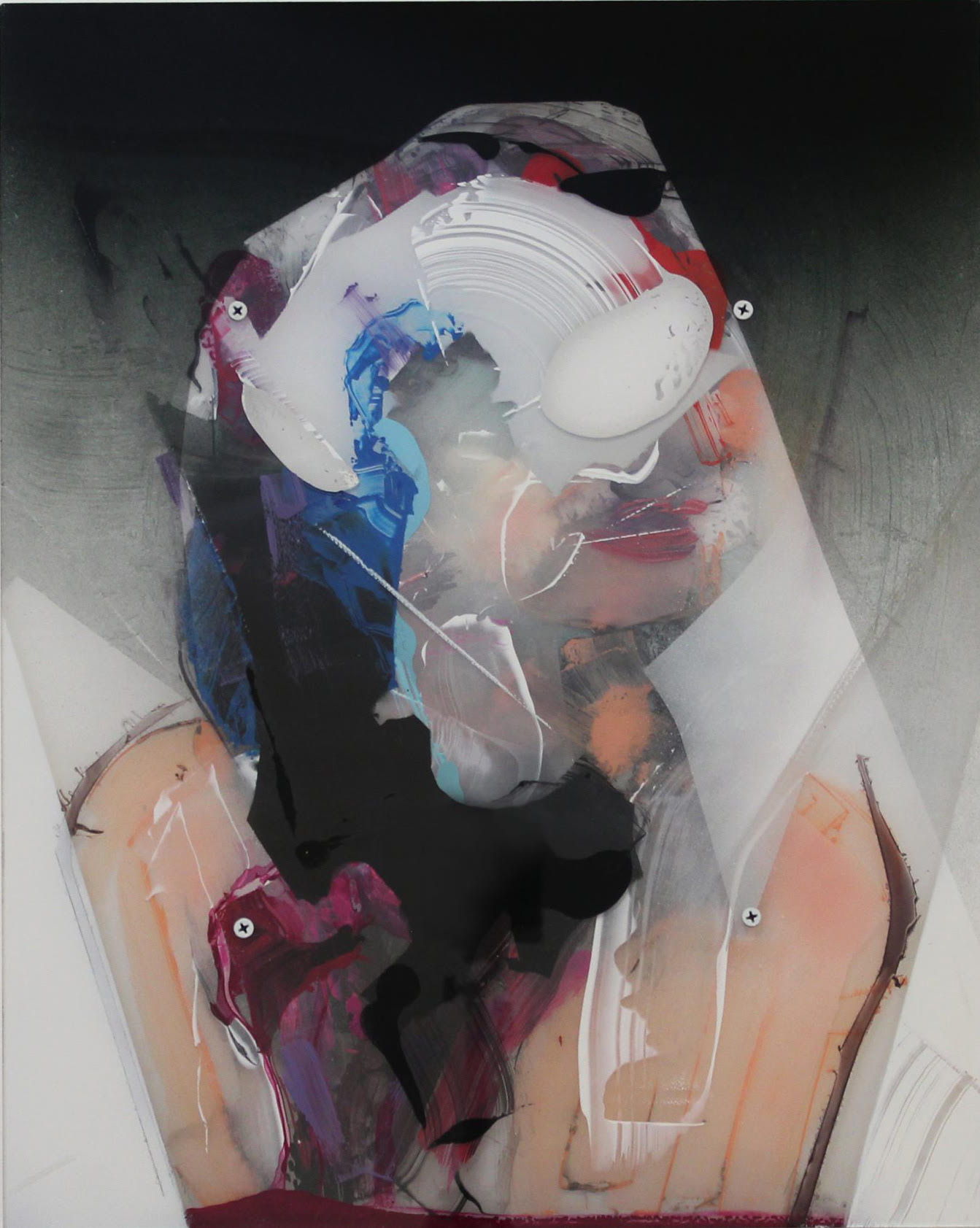 John Holland, Brannan, 2017, acrylic and plexiglass on panel, screws, hardware, 20 x 16 inches. Courtesy of Angell Gallery
John Holland, Brannan, 2017, acrylic and plexiglass on panel, screws, hardware, 20 x 16 inches. Courtesy of Angell Gallery
One of the most controversial aspects of social identity stems from the notion of race and how they too are victims of external influence. The works of Johnathan Key depict young black men adorned in cultural garb that are then forcibly contorted within the picture frame. Their formidable expressions suggest an internal solidarity despite their confinements. The distinctive choice of colors is – as explained by Key himself – an allusion to his own identity: his origins in Alabama, his family, and his queerness among many other personable qualities. It is in face of these societal hardships and forced perspectives that authenticity can truly be found.
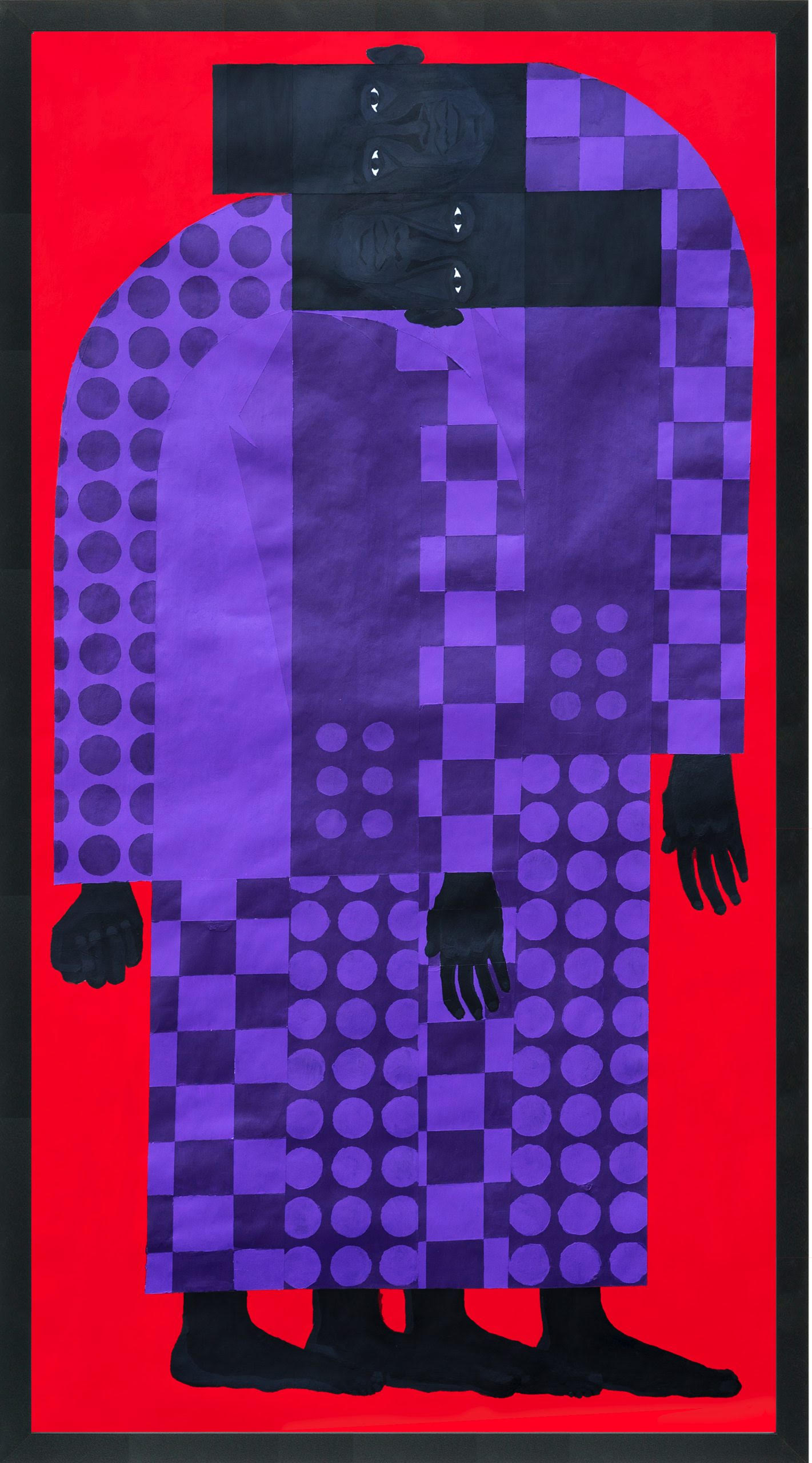 Jonathan Key, Man in the Violet Suit, no. 6, 2017, acrylic on paper, 61 x 40 inches. Courtesy of Angell Gallery
Jonathan Key, Man in the Violet Suit, no. 6, 2017, acrylic on paper, 61 x 40 inches. Courtesy of Angell Gallery
Natalka Husar adds her own extensive collection of character drawings to the exhibition as a multi-faceted approach to her Eastern-European heritage as well as her own creative manifestations. Thirty years of sketches flood the floor of the room, some complete and others forgotten. She procedurally generates her sketches as ideas of new personalities and moments arise.
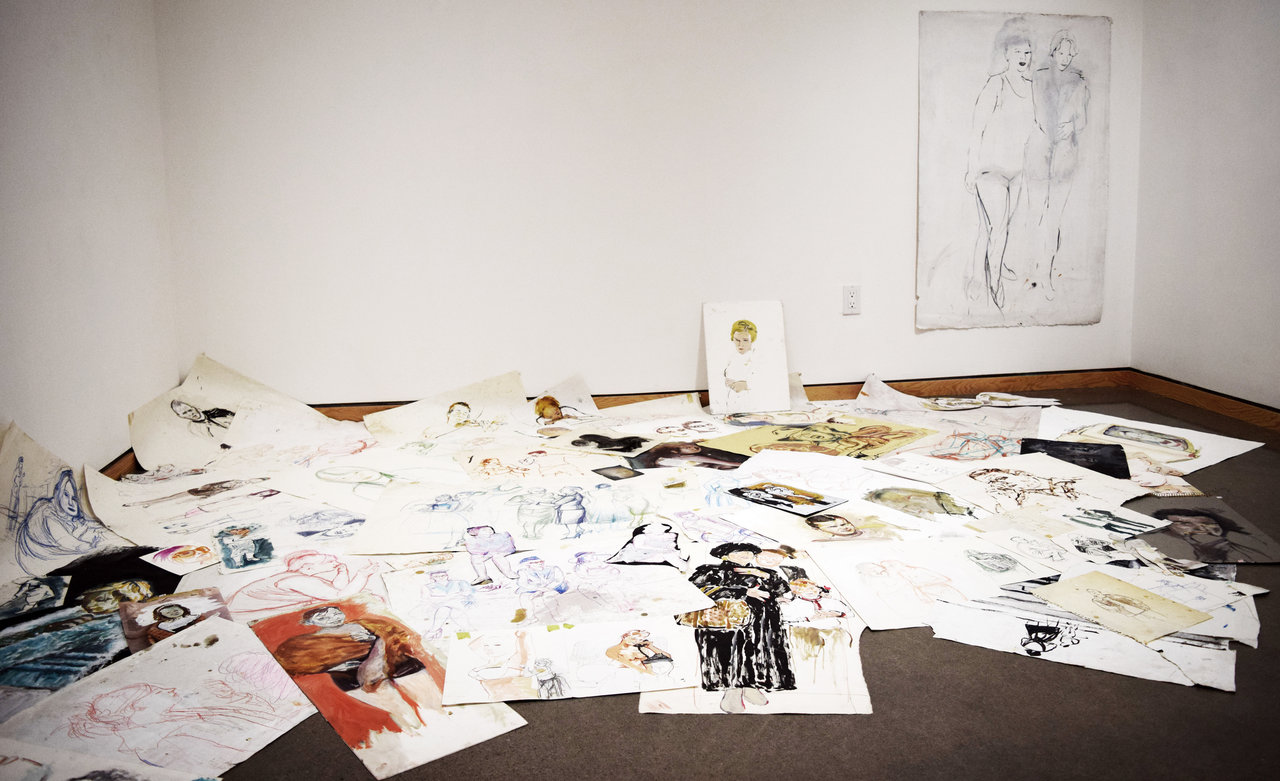 Natalka Husar, Inventory (collected 2017), 1987 Present Preparatory sketches, dimensions and medium variable. Photo: Simon Termine
Natalka Husar, Inventory (collected 2017), 1987 Present Preparatory sketches, dimensions and medium variable. Photo: Simon Termine
The culmination of these artists’ works provides an extensive exploration into the impact of our modern world on the creation of visual art and the very concept of self. I have written here only the artists that were available to attend the opening and speak to their own works; I have yet to delve into the sublime, Baroque-inspired works of Rafael Ochoa, the vibrant expressionism of Bradley Wood, or the online illusion of identity as captured by Coady Brown.
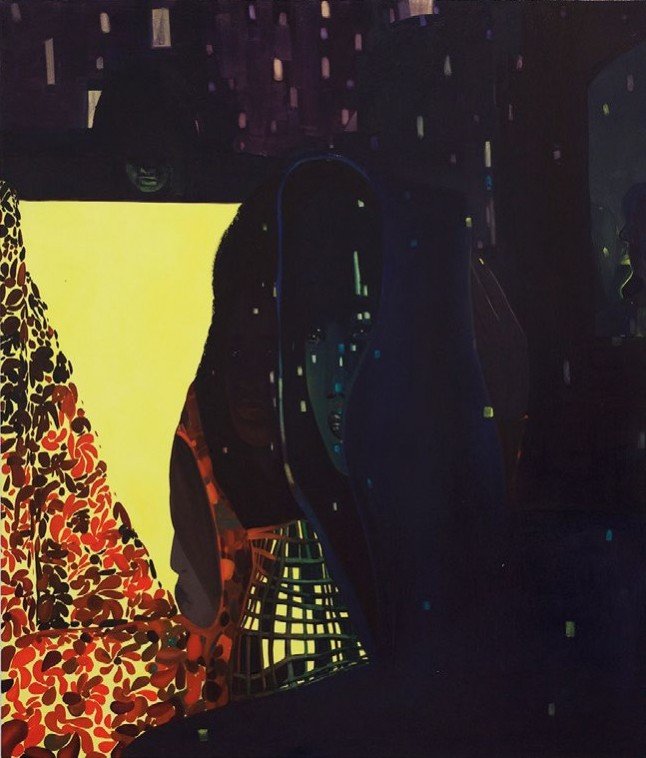 Coady Brown, Signal, 2017, oil on canvas, 42 x 36 inches. Courtesy of Angell Gallery
Coady Brown, Signal, 2017, oil on canvas, 42 x 36 inches. Courtesy of Angell Gallery
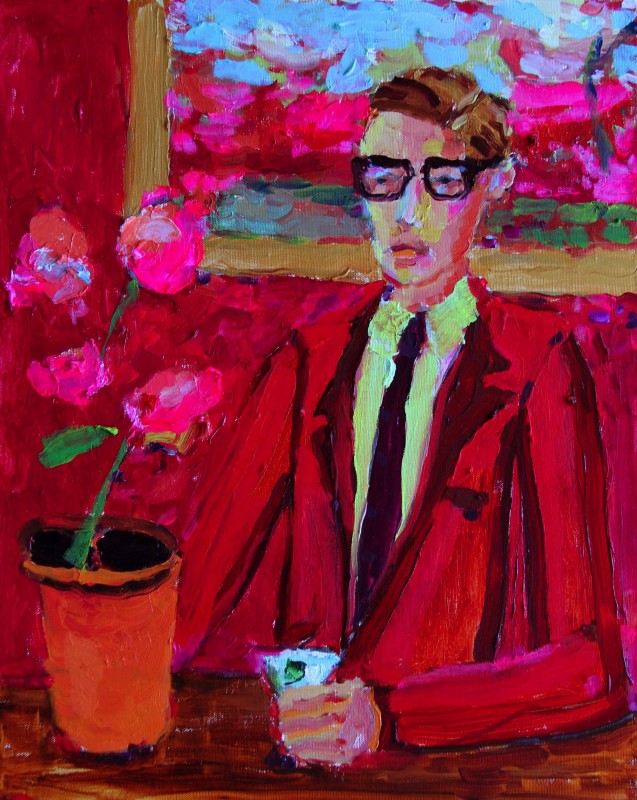 Bradley Wood, The Ivy, 2017, oil on canvas, 20 x 16 inches. Courtesy of Angell Gallery
Bradley Wood, The Ivy, 2017, oil on canvas, 20 x 16 inches. Courtesy of Angell Gallery
Nevertheless, the true gravity of this exhibition could only be enjoyed through one’s own non-digital experience.
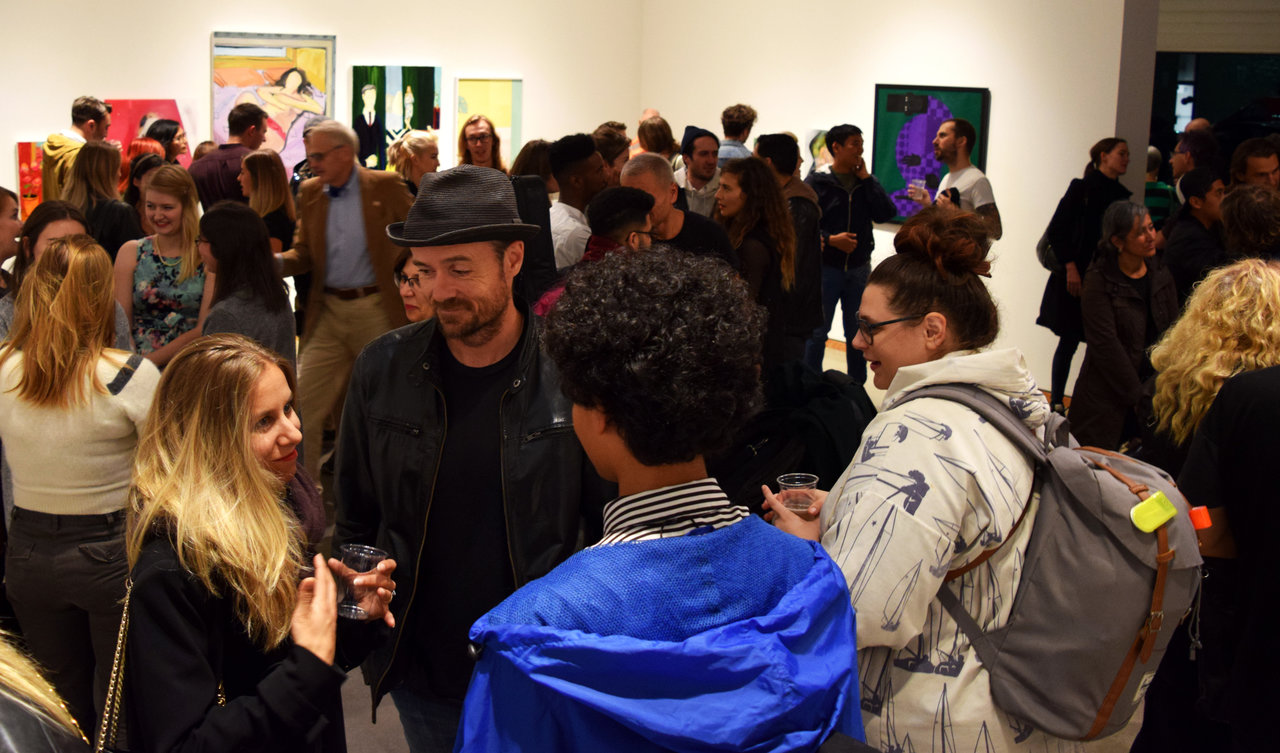 Installation view of the The Anxious Body at Angell Gallery, 2017. Photo Simon Termine
Installation view of the The Anxious Body at Angell Gallery, 2017. Photo Simon Termine
Simon Termine
*Exhibition information: October 13 – November 11, 2017, Angell Gallery, 1444 Dupont St., Unit 15, Toronto. Gallery hours: Wednesday – Saturday, 12 – 5 pm.
